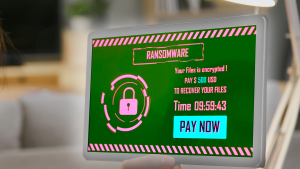Whether it’s at home or in our businesses, we can probably all agree that network security is incredibly important. Government agencies and Fortune 500 companies spend millions of dollars on it every year. What you probably don’t realize is that you don’t need a budget like NASA or Apple to do it. In fact, some of the tricks are absolutely free. There is a little bit of a cash investment for some proper hardware and software, but like I always tell my clients; you can’t put a price tag on your data!
Give the following some consideration towards improving your network security whether at home, or at your business.
Don’t use an Administrator account. Well, technically you need one, so I don’t mean don’t have one. Just don’t use the “Administrator” account. Instead, create administrator level accounts using another name. For example, you can create a login account named “a-tekguy1” and give it the same attributes as the default administrator account. Don’t delete the “Administrator” account, but disable it and keep it on hand for emergencies. This is important because not only is guessing a password difficult, but it is very difficult to guess a username AND a password! Plus, it helps IT departments maintain an audit trail for its staff when changes are made.
Reset your password every 30 days. This one isn’t always very convenient, and most folks are laid back on this one, but this can save you from getting burned and gives you a little extra peace of mind. I’ve had clients and CEOs get burned by people they trusted because their passwords were public knowledge. Sure, it’s easy if your assistant knows your password to set your Out of Office in Outlook when you forget. But, change the password when you can, especially if your login has access to confidential information.
Use a strong password. Strong passwords are at least eight characters in length and contain three out of four character sets. The character sets are numbers, lowercase letters, uppercase letters, and symbols. Also, the longer the password, the better it is for security. My experience is that using an expression or acronym can help you remember them. For example, (1l0v32FLy2Di$N3Yw()Rld@$1Typ3Bl0G$~). Can you guess what it says?
Purchase a decent hardware firewall. You don’t have to spend $5,000+ on an enterprise-level firewall if you own a small business, but I certainly don’t recommend buying a cheap appliance from your local electronics store. You can buy a nice layer 5 firewall with a security subscription starting $400-$2000 depending on your organization size. On an annual basis, you will want to renew the subscription to keep the warranty, support, and security services active. Firewall-level anti-virus, intrusion protection, and content filtering keeps the malware away, and keeps your staff productive.
Purchase a decent anti-virus solution. I’ve experimented with different products over the years. Some are good, some are not good. Don’t waste your time with free products. You will waste your time and money trying to fix virus issues, and calling your IT provider to clean them. There are amazing solutions out there that are easy to manage by your IT provider, that will proactively update with little maintenance. The right solution is important, because it’s easy to innocently go to a website that’s infected and bring it into the operating system. The next thing you know, your browser is hijacked, pop ups are driving you mad, and your computer starts scanning with fake anti-virus programs that look legitimate. There are anti-virus solutions that run light on the computer that will actually warn and block you from going to a website that may have been infected. Pretty cool, and it saves you from hours and days of lost productivity. Combining the firewall and desktop anti-virus packs a great 1, 2 punch.
Keep on patching. Hackers and virus troublemakers get into the computers by exploits in the operating system and third-party programs. Always let your computer update critical updates automatically. Other less critical patches can be done manually based on compatibility of your other applications. Microsoft releases their big updates on the second Tuesday and Wednesday of every month. The patches are usually downloaded and installed by default at 3:00 AM the following morning, which is why sometimes you find your PC having restarted some mornings. Java and Adobe are other common third-party programs you should make sure are getting updated. Anti-virus and firewalls will update on their own as long as your Internet is active and your subscription is current.
These are my basic tips for improving network security. By doing these things, you put yourself in a better position to be safe.





